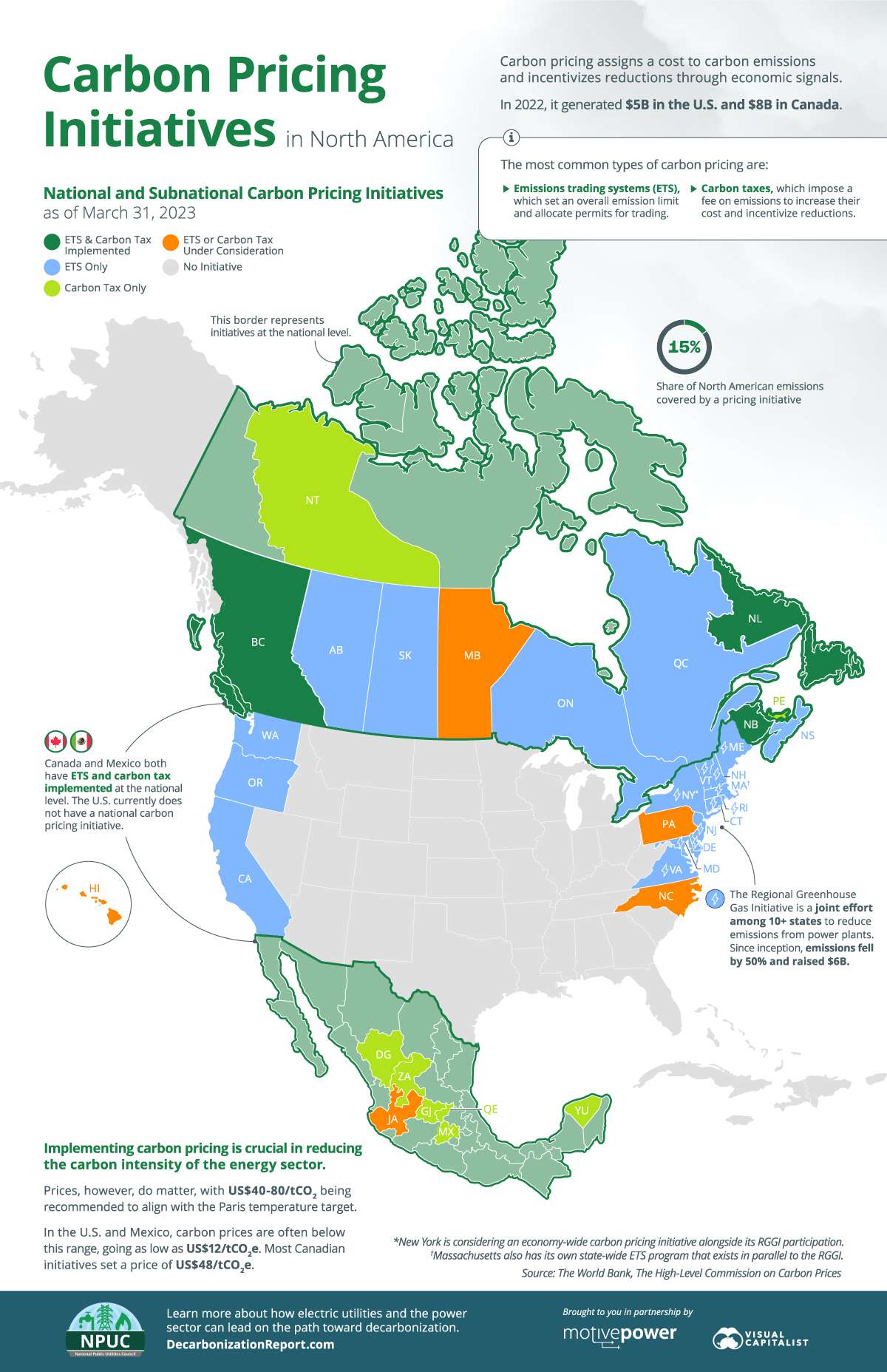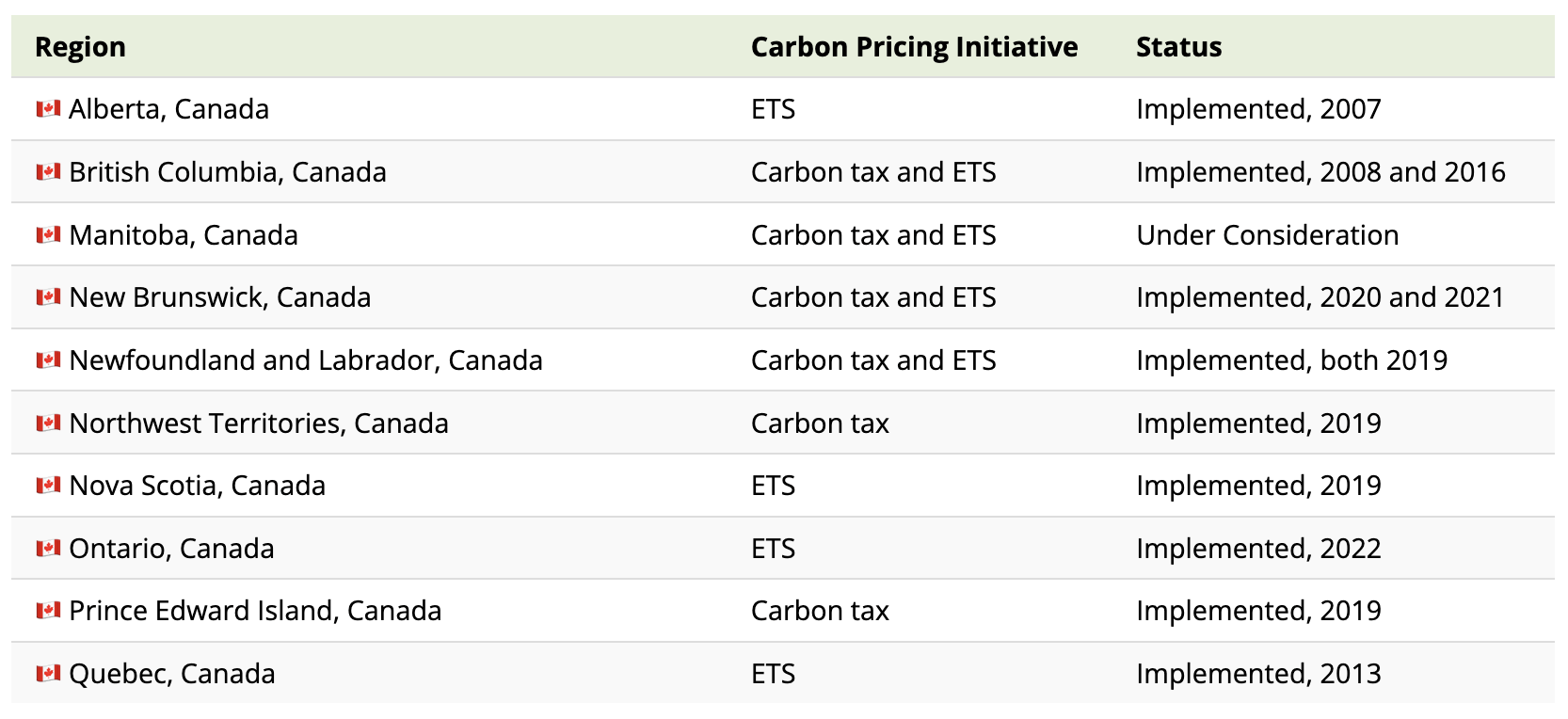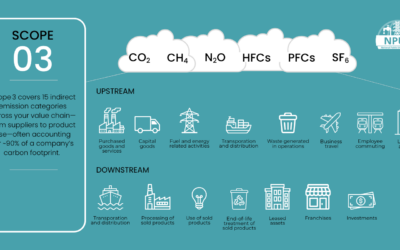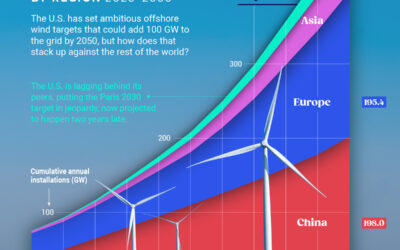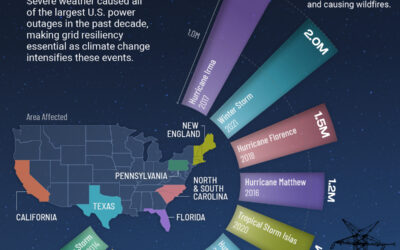Visualized: Carbon Pricing Initiatives in North America
Carbon pricing mechanisms are a vital component of an effective emissions reduction strategy. But these initiatives currently cover just 15% of total North American carbon emissions.
To discover which initiatives are currently contributing to this coverage, this graphic sponsored by the National Public Utilities Council maps out all of the national and subnational carbon pricing initiatives across North America using data from the World Bank.
Let’s begin by looking at types of carbon pricing.
Carbon Pricing Explained
Carbon pricing is a market-based policy tool that assigns a cost to carbon emissions, incentivizing reductions through the use of economic signals.
While there are several ways to go about carbon pricing, the most commonly used types of carbon pricing strategies include:
- Emissions Trading Systems (ETS)
ETS establishes a market for trading emissions allowances among companies. A cap on total emissions is set, and all companies receive tradable emission units. Those exceeding their limits can buy allowances from those with a surplus. - Carbon Taxes
Carbon taxes impose a direct price on carbon emissions. Their goal is to disincentivize carbon-intensive activities, such as burning fossil fuels, by making them financially less attractive.
In 2022, carbon pricing strategies generated $5 billion in the U.S. and $8 billion in Canada. These funds were primarily allocated toward green investments and support for low-income households.
Carbon Pricing Initiatives By Country
The U.S. is currently the only country in North America without a national carbon pricing initiative. Both Canada and Mexico, on the other hand, have implemented federal ETS and carbon tax programs.
Beyond federal initiatives, many regions on the continent have also implemented or are considering their own carbon pricing initiatives. These subnational initiatives are listed in the table below:
The RGGI was the first mandatory ETS initiative in the U.S. and applies to power plants in Connecticut, Delaware, Maine, Maryland, Massachusetts, New Hampshire, New Jersey, New York, Rhode Island, Vermont, and Virginia.
Since its inception, emissions in the RGGI region fell by more than 50%—twice as fast as the nation as a whole—and raised nearly $6 billion to invest in local communities.
Are All Carbon Pricing Initiatives Created Equal?
In the landscape of carbon pricing initiatives, one critical factor stands out—the price of carbon itself.
According to The High-Level Commission on Carbon Prices, achieving alignment between carbon pricing strategies and the Paris Agreement temperature target requires a price of US$40–80/tCO2 by 2020 and US$50–100/tCO2 by 2030.
Unfortunately, many North American initiatives fall short of these prices, especially in the U.S. and Mexico, where carbon prices reach as low as US$12/tCO2e. Conversely, most Canadian initiatives set a price of US$48/tCO2e.
It’s also important to note that the broader impact of these initiatives depends on a multitude of other factors, including the industries they cover, their flexibility in accommodating changing economic conditions, and the manner in which generated revenue is invested back into sustainable practices.
Within the balance of these various elements lies the potential to steer all industries—including the power sector—toward the necessary emissions reductions.

